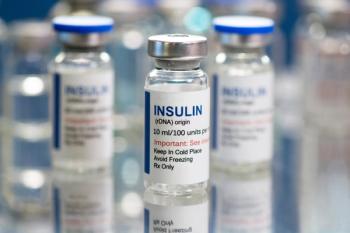
Exercise Can Improve Chemotherapy-Induced Peripheral Neuropathy in Patients With Ovarian Cancer
The affect of an aerobic exercise program was more prevalent in patients with ovarian cancer who had at least 1 symptom of chemotherapy-induced peripheral neuropathy at the beginning of the trial.
A 6-month aerobic exercise intervention improved the adverse effects (AEs) of chemotherapy-induced peripheral neuropathy (CIPN) in patients with ovarian cancer, suggesting that exercise can be an effective treatment option for CIPN, according to the results of a study published in the Journal of the American Health Association.
CIPN is one of the most common and severe AEs of chemotherapy and affects 30% to 70% of patients treating their ovarian cancer with chemotherapy. It is defined by damage to sensory, automatic, and motor neurons that results in altered perception to touch, pain, and sense of position and vibration.
Due to these AEs, CIPN is associated with a worse quality of life and physical function in patients with ovarian cancer. Therefore, the investigators sought to determine an effective treatment that can both improve quality of life and increase survival.
Patients diagnosed with ovarian cancer were recruited to the trial over a 4-year period. If eligible and interested, participants completed baseline questionnaires and were randomized 1:1 to a 6-month exercise intervention group or an attention control group, the investigators wrote.
The exercise intervention was based on at-home moderate-intensity aerobic exercise organized by weekly phone calls from a certified cancer exercise trainer. Exercise mainly consisted of brisk walking, and participants had to self-report their adherence on daily activity logs.
In the trial, 144 participants were randomized to the exercise intervention group (n = 74) or the attention control group (n = 70). Excluding the 10 patients (6.9%; 5 in each group) who did not receive chemotherapy, 134 patients were included in the secondary analysis, with a mean (SD) age of 57.5 (8.3).
Most patients were diagnosed with ovarian cancer at stage III or IV (78 [58.2%]), received carboplatin plus paclitaxel (Taxol; Bristol-Meyers Squibb), and did not have any disease recurrence (111 [82.8%]). Over the course of the study, 36 patients (29.0%) received chemotherapy because they were receiving maintenance therapy or had a disease reoccurrence.
Participants completed the Functional Assessment of Cancer Therapy/Gynecologic Oncology Group-Neurotoxicity (FACT/GOG-Ntx) scale to determine their CIPN score. Out of a possible total score of 44, the mean (SD) score at baseline was 8.4 (6.8) (exercise: 8.1 [5.6]; control: 8.8 [7.9]; P = .56). Furthermore, 127 participants (94.8%) had at least 1 symptom of CIPN at baseline.
After the exercise intervention, the CIPN score was reduced from baseline by 1.3 (95% CI, -2.3 to -0.2) points in the exercise intervention arm, which was a decrease of 16%. By contrast, no significant 6-month change in CIPN score was observed in the attention control arm (0.4; 95% CI, -0.8 to 1.5 points).
The investigators conducted an analysis that was restricted to patients who reported at least 1 CIPN symptom at baseline (n = 127), which revealed a greater CIPN score reduction (-1.6; 95% CI, -2.8 to -0.5 points) in the exercise intervention arm and a resulting decrease of 19%. In comparison, the change in the attention control arm was similar to the primary analysis (0.4; 95% CI, -0.8 to 1.5 points).
Participants who were randomized to the exercise intervention arm in the trial were successfully able to meet their exercise goals, with no reported AEs, the investigators observed. Notably, none of the previous trials that the study authors pointed to for prior research incorporated aerobic exercise.
Some strengths of the trial that were observed by the researchers were the large sample size and the rigorous control for the potentially beneficial effect of attention from interventionists with an attention control comparison group. However, the mostly non-Hispanic White study population limits the ability to generalize findings to diverse populations, and the investigators discussed the need for replication in other ovarian cancer trials.
“Incorporating referrals to exercise programs into the standard oncology care for patients with ovarian cancer could attenuate CIPN symptoms and increase quality of life,” the study authors concluded.
Reference
Cao A, Cartmel B, Li F, et al. Effect of exercise on chemotherapy-induced peripheral neuropathy among patients treated for ovarian cancer: a secondary analysis of a randomized clinical trial. JAMA Netw Open. 2023;6(8):e2326463. doi:10.1001/jamanetworkopen.2023.26463
Newsletter
Stay informed on drug updates, treatment guidelines, and pharmacy practice trends—subscribe to Pharmacy Times for weekly clinical insights.












































































































































































































